Bill Ellis blazed trail of Alaska discovery
Many of today's most exciting mineral exploration projects in Alaska are found along the path left by optimistic geologist North of 60 Mining News – March 25, 2022
Last updated 3/31/2022 at 2:42pm
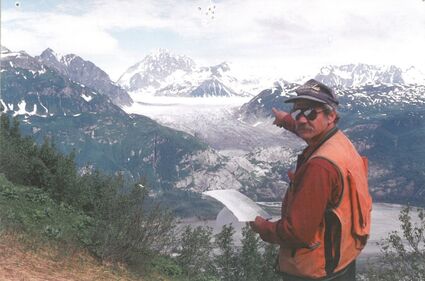
Courtesy of Bill Ellis
Bill taking a moment to point to the incredible Alaskan scenery. His career spanned decades trekking throughout the Last Frontier, leaving footprints and footnotes in many of the most prevalent mining sites today.
On March 18, 2022, Alaska's mining community lost Bill Ellis, a close friend and geologist that was universally loved for his kind spirit and optimism, traits that will live on as a legacy as solid as the Alaska rocks he explored for the better part of half a century.
All of us at North of 60 Mining News were blessed to get to know Bill and wish to send our love and condolences to his family, friends, and colleagues.
In honor of Bill's memory, we would like to republish "Bill Ellis blazes trail of Alaska discovery," which offers a brief glimpse into the life and career of the optimistic geologist.
-A.J. Roan, Rebecca Lasley, and Shane Lasley
Throughout the relatively short modern history of Alaska, many nameless and oft unrecognized explorers have contributed to the Last Frontier state in ways that future generations will never be able to truly appreciate. This, however, is not the case for Bill Ellis, an explorer and geologist who has gifted his knowledge and experience for nearly half a century and personifies the attitude needed to succeed in mineral exploration, optimism.
As if by providence, Bill was born in the historic gold mining town of Grass Valley, California, in 1947. However, he would spend many of his formative years traveling around due to hardship after World War II and later having a stepfather who served in the Air Force.
Yet Ellis would later consider Sparks, Nevada, as his hometown where he spent his high school and college years, eventually going to the renowned Mackey School of Mines to study for his Bachelor of Science in Geology, but not before being drafted for the Vietnam war.
"Everybody was getting drafted, and so I was of the attitude where I could go ahead and finish my degree in four years and get drafted the month I graduate from college, or I can go ahead and get this out of the way. They drafted me before the summer was over, this was 1967."
Although a short period of his life, Ellis earned numerous accolades for his service as an eventual platoon sergeant for the 506 Infantry, even earning a Silver Star Medal, the third-highest military decoration for valor in combat, among many other medals.
After serving for "one year, 10 months and 28 days," a number he was quite quick to remember, Bill returned home and finally graduated in 1972, earning his degree, although not after spending his first year in accounting and immediately deciding it was not for him.
"I'd always been interested in rocks, collecting them as a very young kid in my driveway in Grass Valley. All the driveways were essentially mine tailings, so I'd go out and look for quartz and pyrite and things like that," Ellis said during a recent interview with Mining News. "I guess I had an affliction for it."
After graduating, however, work was scarce in Nevada. So, with a healthy dose of wanderlust and a longtime desire to visit Alaska, Ellis packed everything he owned into his El Camino, and he, along with his dog, headed north.
Yet Alaska would have to wait, as on his way to the Last Frontier, the wandering geologist earned himself a job at the Terra silver mine in the Great Bear Lake area in Northwest Territories.
"It was a very enlightening job playing mine geologist in a small but very high-grade operation. It was a very good learning experience," Ellis recalled.
It was during his time working in the remote, barren lands of Northwest Territories that he met the chief geologist for Sunshine Mining Co. that had come to examine the silver deposits in the region, who told him about some of Sunshine's projects in Alaska.
This meeting allowed Ellis enough reason to finally make his way to the 49th state. He worked in Northwest Territories for a few more years before heading to as far north in Alaska you can go before reaching Arctic tundra, the Brooks Range, where he would be first introduced to a fantastically mineral-rich region that would involve many years of his geological career in the great northern state, the Ambler Mining District.
This was a newly discovered region for mineralogical exploration, with no less than five companies disputing it, creating a claim staking war. Luckily, Sunshine had a leg up on most of the other companies, as the crew had been in the district earlier and had some ideas of where known prospects were at the time.
For about five years, Bill would hop back and forth between Alaska and Canada, accruing geological knowledge and experience in the North.
His summers would be spent either claim staking or geologic mapping new prospects and discoveries in the Brooks Range up until he eventually parted ways with Sunshine Mining and Northwest Territories to finally settle in the Last Frontier state and take up a position with the once prolific Alaska mining company of the time, Anaconda Mining.
Sunshine Mining
"One of the deposits that is quite significant and probably the third largest known deposit in the Ambler District is the Sun deposit," Ellis told Mining News.
While Sunshine was an obvious inspiration for naming this silver-enriched volcanogenic massive sulfide deposit that Ellis was heavily involved in discovering and exploring, there was another fundamental factor when calling Sun and other deposits of the day.
"Back then, we had to write out every claim notice by hand, in triplicate. We discovered pretty early on, you don't want a long name for your claim group!" Ellis explained.
Sharing more secrets behind the succinct naming of claims, Ellis said the Bud prospect was named "after Budweiser, of course," and the Sinbad claim was named after a cook that worked on the camp with them at the time, short for "Cynthia's bad cooking."
For nearly five years, Ellis worked with Sunshine seeking silver projects up in the Brooks Range and down throughout the Lower 48.
However, most of the prospects found in the Ambler District did not hold high-grade standards that Sunshine was looking for and therefore passed them off to other companies to work.
"We recommended that Sunshine find a partner, a major company, and we selected Anaconda Mining, which was a big player up here for many years, as the group to come in and take over the claims that Sunshine had," he recalled.
In 1979, Ellis would decide that his time with Sunshine was done and went to work with Anaconda. That same year he officially moved to Alaska.
Anaconda Mining
Anaconda would go on to help Bill settle into his new home in Alaska. But he would not stay long, as the company had him work all over the state to explore and determine viable claims, leading him to first encounter Johnson River, a present-day hot gold and silver prospect.
"I put the discovery drill hole, in 1982, there," Ellis recalled.
Many of the initial discoveries in the Johnson Tract project are attributed to work put forth by Anaconda. Yet, in the early 1980s, Anaconda would be purchased by ARCO, an oil company looking to have a minerals division. This acquisition allowed Anaconda exploration to have "very large budgets," according to Ellis.
"In the early 80s we were by far the largest exploration effort in Alaska. I think we had eight helicopters and 150 people in the field in 1980," he recollected.
During his time with Anaconda, Ellis' own place of interest was in the Cook Inlet region. Besides the Johnson River property, he had a hand in the exploration of Red Mountain, a project area on the Kenai Peninsula that is rich in chromite, a mineral considered critical to the U.S.
Yet, the good times at Anaconda would not last. As with many other oil companies that had sought to break into the mining sector, ARCO dissolved its mining businesses and sold off its assets in 1985, which Ellis had a hand in as far as the Johnson property was concerned.
Longtime friend and colleague John Proffett and his shared private equity group held onto Johnson Tract until optioning to Westmin Resources Ltd., which planned to process a deposit of high-grade gold-silver ore outlined by Anaconda at the mill at its Premier Mine near Stewart, British Columbia. Due to weak precious metals prices at the time, however, this plan was never executed. Today, Johnson Tract has found a resurgence with HighGold Mining Inc., which is picking up where Anaconda and Westmin left off.
More information on Johnson Tract and HighGold's work there can be read at Exploring a uniquely Alaskan opportunity in the current edition of North of 60 Mining News.
For two years after the shuttering of Anaconda, Bill remained in Alaska, "playing consultant." Then in 1987, he went to work with Battle Mountain Gold, where his exploration travels would have him throughout the Alaska Peninsula, as far opposite in Alaska from his Brooks Range days.
From gold to battery metals
During his days with Battle Mountain, Ellis spent much of his time traveling along the Alaska Peninsula and Aleutian Islands -- from Unga Island, home to one of Alaska's first hard rock gold mines, to Popof Island and many others.
"I was essentially the project geologist for that area of the state for Battle Mountain, and I was fortunate enough to make, what I think, are discoveries that someday might be mined," he said. "They were kind of small but reasonable grade gold deposits that are currently being optioned by Heliostar."
Like his influence with the Ambler Mining District and later the Johnson River property, albeit not as large, southwestern mining along the Aleutians is making headway with Heliostar Metals Ltd. bringing to life once again another region where Ellis was making discoveries and exploring before it was cool.
"The Centennial deposit is one that I discovered when I was with them (Battle Mountain), and it's right off the runway at Sand Point. I named it the Centennial because it was the 100-year anniversary of the town," he said.
Ellis worked for Battle Mountain for about the same stint he had worked with Sunshine and Anaconda, about five years, before moving on and working for American Copper and Nickel – a North American subsidiary of INCO (International Nickel Company) that was later purchased by Vale Limited, the largest nickel producer in the world – in 1994.
Spreading throughout much of Alaska, American Copper and Nickel sought to reevaluate old prospects while also introducing new concepts to rethink the geology of the state.
During his period with American Copper, Ellis was involved in the discovery of an intriguing nickel-copper-platinum group element play in the Paxson Amphitheater Mountain country of the central Alaska Range.
"INCO was active there for several seasons until they pulled out of Alaska, but essentially I was with them for six years," he recalled. "Most of that time was involved with exploration in a nickel-copper- and PGE-rich district that is going to get probably more interest as those commodities are very important in the upcoming EV commodities. This has those elements."
According to Ellis, the geology that comprises nickel and cobalt – ultramafic rocks – in this region has the largest accumulation of ultramafic rocks in the Wrangellia terrane, and after INCO pulled out and passed the claims onto junior companies, the area has had relatively little mining ever since.
This was in 1999, and after American Copper and Nickel, Bill co-founded where he would continue to work until retiring from the field in 2021, Alaska Earth Sciences.
AES and a legacy
Alaska Earth Sciences is a full-service geologic consulting firm that has its roots founded in the Last Frontier. Owned and operated by Alaskans, the company has an aggregate of more than 75 years of professional geological experience, of which Ellis contributed to greatly.
After settling into what would entail the remainder of his professional career, Ellis would continue to work all around Alaska. His efforts, along with his colleagues, would continue to explore and help expand resources throughout, working many times with Alaska Native corporations, of which he had spent decades building close relations in his own right, and later with the twenty years working with AES.
For Alaska, the importance of land preservation in mineral exploration is heavily tied to many Alaska Native corporations. However, it is part of what makes Alaska a unique place to work in the mining sector. Ellis has created a legacy of cooperation and respect by adhering to those values, setting an example for future generations.
During a gathering to celebrate Ellis' career and retirement, it was John Proffett who perhaps put it best, exemplifying the attitude of a successful geologist and encompassing Bill's career.
"Most geologists spend their whole career and never find anything -- they never find an ore deposit. You know what the reason is? Because they don't think they're going to find anything. If you're going to be successful in this game, you got to be optimistic; those are the guys that find the ore," Proffett said. "Thinking about that, one of the first people I thought of was Bill Ellis. He's optimistic in exploration, he believes he's going to find something and has the ability to focus his efforts and be optimistic in the right places, and that's resulted in a number of discoveries, and I don't have time to go through them all."
These numerous discoveries made during his storied career are not what Ellis finds most gratifying, however, it is their rediscovery.
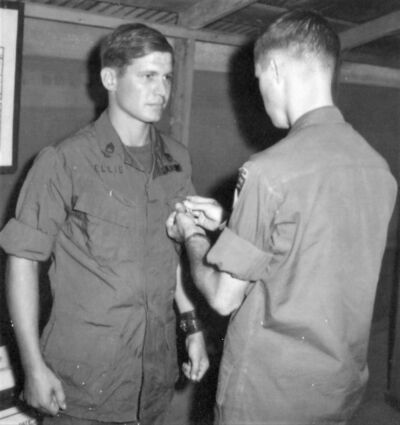
Courtesy of Bill Ellis
Bill Ellis was awarded the Silver Star for his actions on Hill 937 (also known as Hamburger Hill). The Silver Star Medal is the U.S. Armed Forces' third-highest military decoration for valor in combat.
"Probably the most rewarding thing was getting an opportunity to go back to prospect areas, that I had either done the initial exploration, or the discovery, of," he reminisced. "Like the Sun deposit, I was able to go back there in 2007, put a crew together, build an airstrip, build a camp and mobilize two drills and do a drilling program on the Sun deposit; it hadn't been worked on in 20 years, and prior to that it was 35-40 years since I was there."
For nearly half a century, Ellis trekked throughout the wildernesses of Alaska, leaving his mark for future explorers. And like the next generation of Alaska geologists that may find ore if they have a bit of Ellis' optimism and follow his paths across the state, he too, found it worthwhile to retrace his steps.
Bill lived with his wife in Eagle River, the same house since Anaconda helped him move in 1979. Between them, they have four children and six grandchildren, as well as two dogs.


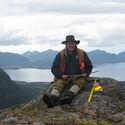
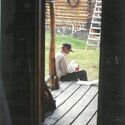
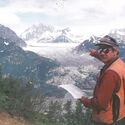
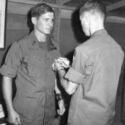















Reader Comments(0)